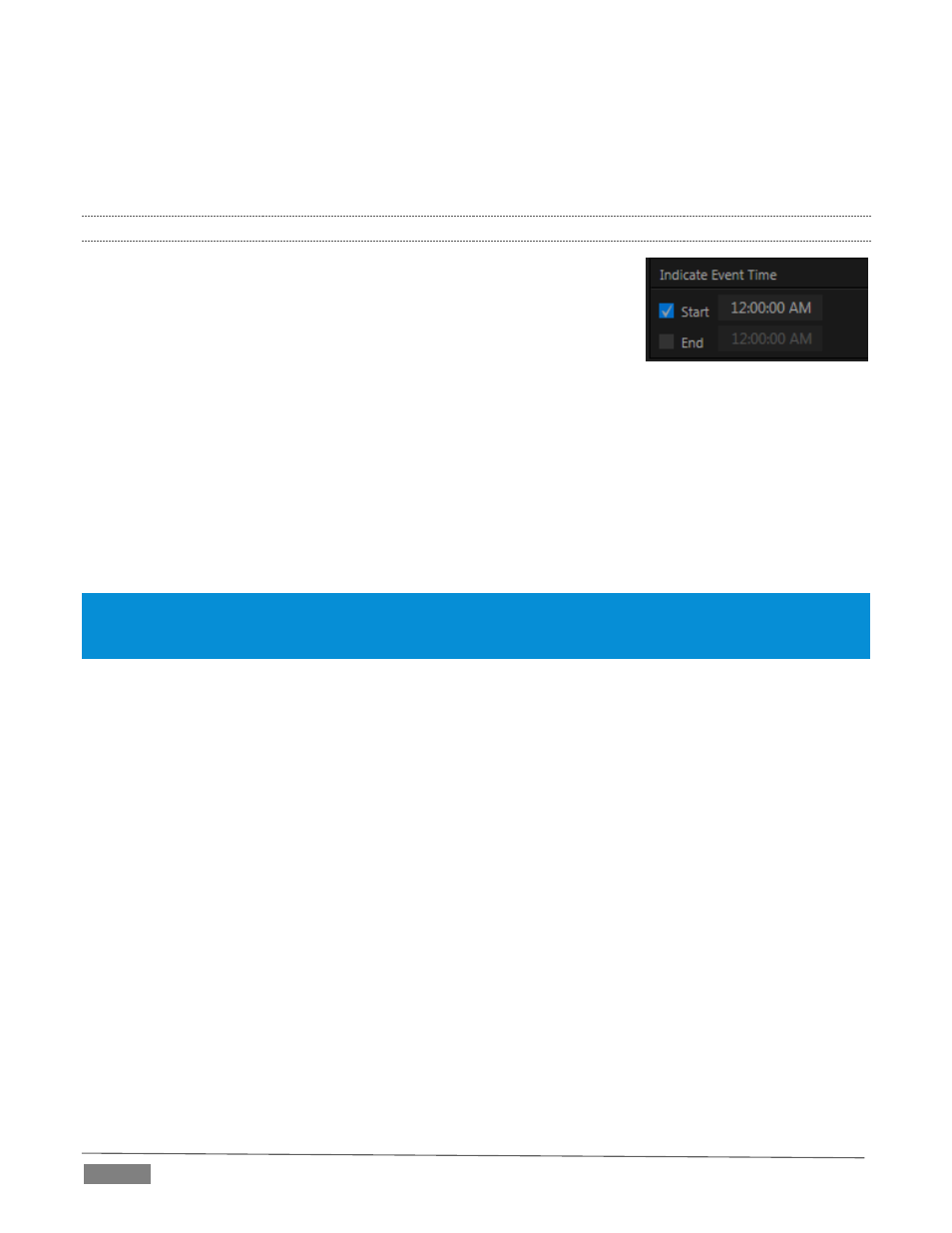3 ltc timecode – NewTek TriCaster Advanced Edition User Guide User Manual
Page 100

Page | 88
During live production, the Dashboard and as well as TriCaster’s monitor panes and default Multiview layouts
(Figure 85) offer Broadcast Clock displays based on the current timecode.
Secondary clock displays show a useful countdown to the (production) Start and End times when the
corresponding switches are enabled in the Timecode Configuration panel.
8.4.3
LTC TIMECODE
Linear timecode is by far the most common method of sharing an external
timecode reference in video production.
Output from an external timecode generator is supplied to devices in the
video pipeline using a standard audio connection. TriCaster uses either
Audio Input 7 or 3 for this purpose (see Section 3.6), depending on the model
(as mentioned previously, TriCaster 410 and TriCaster Mini do not support
this feature).
TriCaster decodes time stamps from the audible signal, and uses the values for clock displays and embedded
timecode when recording video. This is a great asset for post-production purposes. Enable linear timecode
using the switch labeled Use External timecode (LTC) in Timecode Configuration.
Sound from the audio input tasked with supplying timecode is automatically muted for recording and output
purposes when LTC timecode is enabled, but you can un-mute it briefly in the Audio Mixer to let you adjust
input levels.
Hint: The timecode display in the Live Desktop titlebar is tinted blue when external timecode is in use. If the external
connection is lost for any reason, the display changes to white. TriCaster will attempt to maintain continuous
timecode from the interruption on, until a valid signal is restored (in which case the display turns blue once more).
FIGURE 86